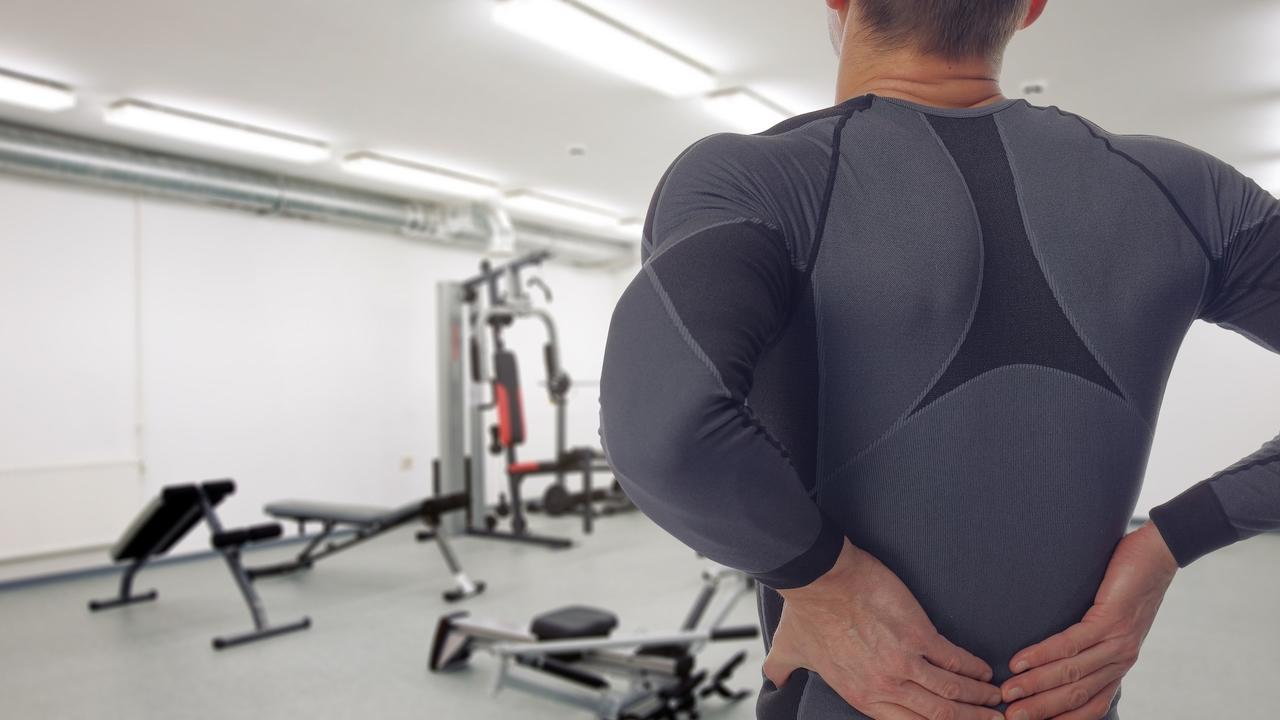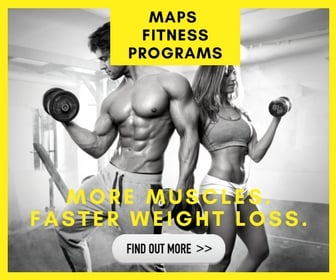When you first embark on a fitness journey or even if you want to change things up to break through a plateau or if you just want to take your body to extreme levels, there is an order of operation when it comes to resistance training that is superior to all others. Yes, the order of your training goals and how you tackle them make a HUGE difference in your success and I'm not just talking about rep ranges or even training cycles. What I am talking about is more specific, but before I get into it let me tell you about an experience I recently had…
A few weeks ago I went hiking with my family. Hiking has recently been something that I have gotten really into. One of my favorite things about getting into new interests is meeting new people. Hardcore hikers are pretty cool people, kind of hippy-ish and fit at the same time. Well, this last time I went hiking we ran into some newbies. When we had arrived at our hiking location we parked next to some other guests who had also just arrived. It was a car full of gym bros. I can spot a gym bro a mile away having worked in the fitness industry for over 20 years…they are “my people.” These guys were classic. All well built muscularly, string tank tops or one size too small t-shirts and they even had their protein shaker cups, probably so they could “prevent muscle loss” (totally false FYI). We said hi, had some conversation and then went our separate ways.
One of the benefits of having worked in fitness for so long is that I can see poor muscle recruitment patterns and dysfunction pretty easily and these guys were FULL of them. They all had forward head, forward shoulders, pelvic tilts that were a little extreme and they generally looked very tight. Now keep in mind they didn’t look out of shape at all, in fact, the average person would say they looked muscular and ripped. Unfortunately, the muscle they had developed didn’t prevent an injury from occurring and on the way back from our hike I saw one of them bandaging his ankle. “Hey man, what happened?” I asked. “Oh I took a bad step and really twisted my ankle” he replied. I sat down and had a conversation with him, and soon after his friends joined. We started talking fitness and they asked me what my background was. Once I told them I had some experience working on correctional exercises and on rehab the floodgates opened. “My right shoulder always bothers me when I lift,” said one guy. Another chimes in, “I cant squat or deadlift cause it hurts my lower back” said another.
This is, unfortunately quite common. I know at least a handful of muscular gym rats who slipped a disk or tore a rotator cuff, not from hard training in the gym but from some normal regular activity. One of my close friends actually slipped a disk picking up a 70lbs moving box!! This is a 210lbs muscular guy too!
So what gives? Why do we see so many dysfunctional gym rats? Why do some people get really lean and muscular but still suffer from pain at worst or they simply don’t look like they move well at best? Does the term “muscle bound” have any validity?
What we need to understand about the human body is that it is an exceptional adaptation machine. Our bodies evolved over thousands of years to be able to function as efficiently as possible regardless of the circumstances. If you lose your eyesight you will become more in tune with your other senses like your sense of hearing or smell. If you lose an arm you become more proficient in the use of your other arm. If you have a movement dysfunction you become as good as you can get with that particular movement dysfunction.
Here is a great analogy…imagine if you never learned how to type on a keyboard. You always use your two index fingers to type and you’ve been doing this for years, maybe even decades. You will have learned to type relatively well with this subpar technique. In fact, you probably type faster with just two fingers than you would if you tried to use all your fingers in the most efficient and “proper” way. If you tried using all your fingers in the proper way you would find you are slower in that way at this moment, however, if you practiced, you would find that you would slowly surpass your old speed and hit new typing speeds that would have never been possible with your old inefficient way.
This is what happens with so many gym rats. They go into the gyms with dysfunctional movement, likely from the lifestyle they had before going to the gym. The most common today are a forward head (looks just as it sounds), forward shoulder, and anterior pelvic tilt (butt sticking out, arched low back). All of which likely came from looking at computer screens and smartphones all day, and from prolonged sitting. Their bodies became VERY efficient with these positions and those positions became their default postures and movement patterns. When they started training at the gym they lifted weights without any regard for correcting these patterns and postures so the result became more muscle and strength that SUPPORTS their current posture and patterns. Poof!!, their “imbalances” become more solidified within their bodies. They never realize that, although they have likely gotten good at moving in these subpar ways, they are missing out on the full potential of their bodies. They also set themselves up for overuse injuries and acute injuries as the joints start to wear down and problems start to reveal themselves.
This is likely what happened with the gym bro hiker. The hiking path wasn’t very difficult, especially not for a fit and strong young man, but his body just didn’t move optimally. His body was not set up to move in ways other than to train individual body parts with weights so his injury risk was much higher than it should or could have been. He never “corrected” his movement dysfunction or posture imbalances and instead went straight to muscle building, and as a result, he became a bigger, stronger and leaner imbalanced version of himself. Had he followed the right order of things with his training he would have likely not hurt himself and would also ironically have a more balanced, symmetrical and developed physique.
When you first start training or when you start on a new goal or fitness journey its IMPERATIVE that you first create optimal movement before trying to build tons of strength and muscle. It does slow down how fast you can build muscle at first (due to a reduced intensity that correctional exercise entails), but over time you build more muscle and get better and faster results because you can move better. Better movement has a higher upper limit of progress because you won't be limited by dysfunction, just like typing with all fingers has a higher potential for speed than just using two fingers does. It should always be step one and the time you spend here depends on how bad you currently move. In fact, if you’ve been training for a long time it will likely take you months of correctional training before you can move on, but it will be well worth it. Below I list my favorite go-to movements that generally help people move better. Keep in mind this article is written for general purposes and your body is quite unique. What may be correctional for one person may create more dysfunction for another. For more personalized assessment and training, I recommend my programs MAPS Prime and Prime Pro. I am going to share with you my favorite movements for the most common problem areas, the shoulders, the low back, the hips and the ankles.
Let's start at the top, the shoulders. Shoulder dysfunction is common, especially with heavy bench pressers. For general shoulder mobility and function, the movement Handcuffs with Rotation and Prone Cobra are my favorites. The first tackles the shoulder through its fullest ranges of motion and the latter helps strengthen the muscles that work the mid back so that you don’t have a forward shoulder.
https://www.youtube.com/watch?v=0IKGDhbssYQ
https://www.youtube.com/watch?v=0RAs3-Yx8oo
The low back is also a common area where people tend to have issues. Three excellent movements for low back pain are pelvic tilts, bird dog, and cat cow. All three help improve control over the muscles that surround the low back which give you a better “connection” to that area. I also like to add hip flexor deactivating crunches to help strengthen the core independent of the hip flexors which is great for excessive low back curve aka anterior pelvic tilt.
https://www.youtube.com/watch?v=aBHoZTle2lE
https://www.youtube.com/watch?v=b-lKgccv8Og
For the hips, there is no movement that is more universally effective in my experience than 90/90. This movement has corrected more hip dysfunction in my healthy clients than I can count.
https://www.youtube.com/watch?v=slYw2YsBZhA
https://www.youtube.com/watch?v=uxh_b87er9s
https://www.youtube.com/watch?v=Vc_Wg7wmXaQ
Finally for the ankles combat stretch is a game changer. If you find it hard to squat to depth without elevating your heels this movement is for you. The following videos show the combat stretch along with other ankle mobility movements.
https://www.youtube.com/watch?v=_sM2xiRuwwQ
https://www.youtube.com/watch?v=6AwZ6Os75IE
https://www.youtube.com/watch?v=OAi_qbdKpL4
https://www.youtube.com/watch?v=KRHld3lzUtQ
Those are all examples of correctional exercise movements but the point is really to make optimal movement a priority. Dedicate the first 15 minutes of your workout to it, or better yet, dedicates an entire training cycle (3-12 weeks) to correctional exercise. Be patient as this can take some time and you won't be using your normal lifting weight. Just like the example of typing on a keyboard, you need to relearn some things before you can really blast off. People are always shocked at how much faster and better they progress when they make movement a priority. Give it a try for yourself and you should surpass your old best in a relatively short period of time.






